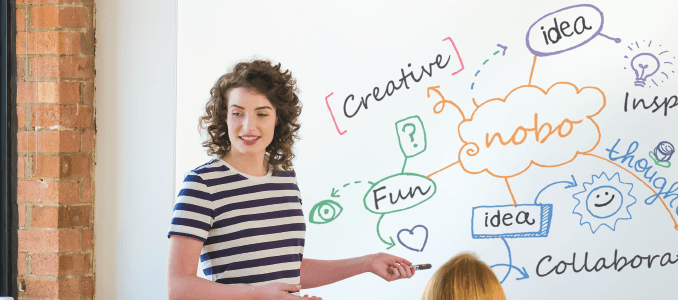
[Sponsored]
Love them or hate them, meetings are an inescapable – and necessary – part of any workplace; they are where the planning, direction and decision-making for creating an efficient and smooth operation takes place. However, the main reason they strike fear into some people’s hearts is the outdated image of the foreboding business leader commanding their troops from the head of the table – and that’s no longer a realistic image of what meetings are or should be.
Research by MIT Sloan Business School suggests that the average employee spends 24 hours a week in meetings, which more than double that of the 1960s. As a result, this has to be time well-spent for the sake of productivity and staff wellbeing, regardless of the type of meeting.
Formal
Formal meetings are the kind that concern members the most, as they tend to be serious in nature and led by senior management. They often use a structured approach and are predictable in nature – however, they are merging more and more with the informal type of meeting.
Informal
Informal meetings tend to be shorter, more casual and based around simple, day-to-day problem-solving. They tend to be less about routine and structure, and allow more of a democratic way of working, with members given a say regardless of their status. This type of meeting has led to a rise in encouraging creativity in the workplace.
Creative
Creative meetings effectively utilise all members as team players and allow a free exchange of ideas. Mind mapping, brain writing and role playing between staff all allow them to reach new ideas and solutions in a way that inspires and keeps people relaxed, while creating a meeting mood board can identify issues within the business and encourage staff bonding as well as promoting creativity.
Regardless of the type of meeting, the most important aspect is having the right equipment. Visual aids such as white board and flip charts, communication tools and recording devices are an essential element of each and every meeting, and they allow for truly collaborative meetings with full participation.
Nobo, a leading viscom specialist, suggests that working from a checklist of meeting room equipment can ensure nothing the group might need is missed out – from marker pens erasers to flip charts and easels. A whiteboard that fits the room best will allow the group to work together on a project, and considering different types of surface – enamel, melamine, steel and so on – will allow a business to make the right choice to suit it.
The idea of promoting collaboration in the modern meeting room is to move away from the image of the droning, despised corporate team leader. Ultimately, the goal is to provide a fair and democratic environment where people feel confident enough to be creative, communicative and collaborative.
Nobo is all about making sure ideas are effectively recorded and implemented. It can’t run the meeting for customers, but it can provide the highest-quality materials to help them do so.
Nobo’s whitepaper on creating better meetings can be downloaded here.
Don’t forget to follow Dealer Support on Twitter!

Be the first to comment